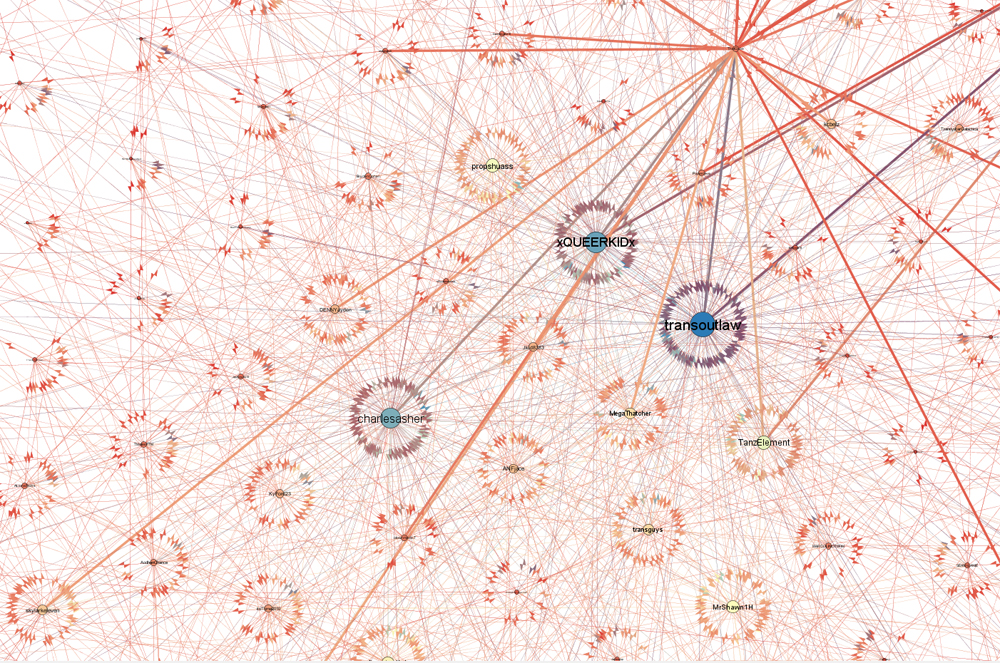One of the problems I’ve run across in working with YouTube is that its social network elements are tied us with its primary function as a platform for user-generate content (UGC). This content is also primarily user-filtered, based around the idea of “tags.” Presumably, a YouTube user “subscribes” to another’s videos because of the content.
On YouTube, unlike other social network sites (SNS), participants aren’t always “primarily communicating with people who are already a part of their extended social network” (boyd and Ellison). Especially in the case of a special identity-oriented community as trans people are, users are specifically seeking (in some cases) “latent ties” based on an offline connection. These ties are what allow transmale vloggers to call their connections a “community,” even though they’re really a small network within a larger networked public.
However, before I embarked on my critical reading of vlogs, I wanted to get a sense of what this network might look like – so I did.
Method: Using Webometric Analyst, an amazing little tool, I culled all of the user info on videos (up to 1,000 results) that appeared in searches for “ftm” and/or “transman,” common vlog tags. I then took that list and excised multiples, which brought the total number of users down to around 500.
Using this list, I has Webometric collect both “subscriber” and “friend” networks, pulling each users’ various subscribers/friends–the friend network took around 24 hours to cull. These networks I converted into Panjek-ready .net files, which I visualized in Gephi. I’ve chosen to use a Fruchterman-Reingold algorithm for rendering because it gives a sense of “layering” to the network, and well as being fairly “readable.”
(A brief graph reading guide: The node colors are scaled red to blue, with blue indicating a large degree of connections. Edges (aka the “lines”) are colored to match their nodes, and blend for mutual connections. The “halo” effect indicate arrows coming on and out of the node.)
The subscriber network, when graphed out, shows that the big “hub” users manage subscriptions in different ways. skylareleven doesn’t tend to subscribe out, but he has a lot of subscribers in; in contrast, transoutlaw has a large amount of mutual subscriptions. Now, compare that to the same list of users’ friends network.
transoutlaw maintains his prominence, friending as often as subscribing, but a lot of the prominent “subscribed to” blogs shrink down. Instead the users who stand out, xQUEERKIDx and charlesasher, are users who either choose to friend others or accept others’ friends requests. On the whole, users’ amounts of friends tend to be fairly stable, thus the limited number of large nodes.
So one could make an argument that friending tends to be a far more “restrictive” practice. But without doing a deep reading of these users’ comments/pages (as well as graphing out their commenters’ relationships) I couldn’t understand what these connections and interactions with their friends might be.
This graph also highlights how friendships can be restrictive; the line on the far left side is the mutual relationship between three users, yet none of them are connected in to the larger network. And though it’s far more obvious in the friend network than the subscriber network, both graphs also illustrate terms are not an automatic connection to the network – while shows such as TheLunaShowTV appeared multiple times on the user list, the actual account is poorly connected, if at all.
As I said, this is a trial run to see how effective this method is for culling data, and by no means my final map of the network. I’d like to run a few more trials using more/different terms and see how the user list shifts, if at all.

Leave a Reply